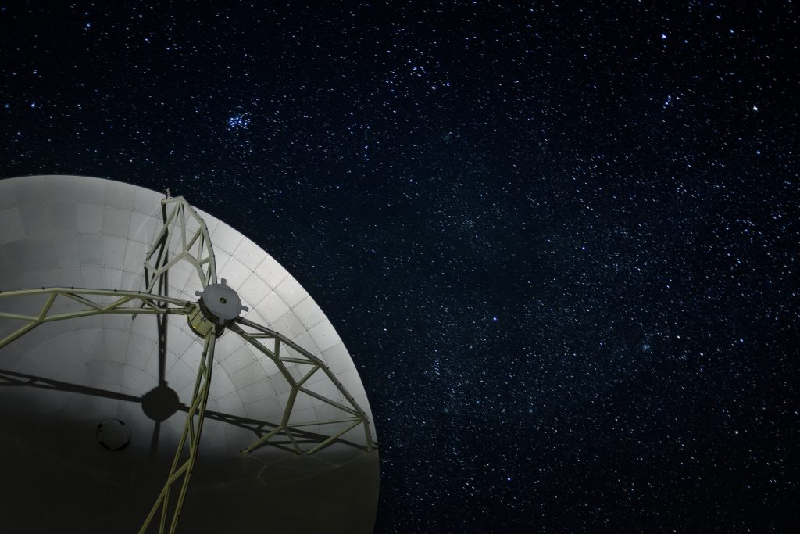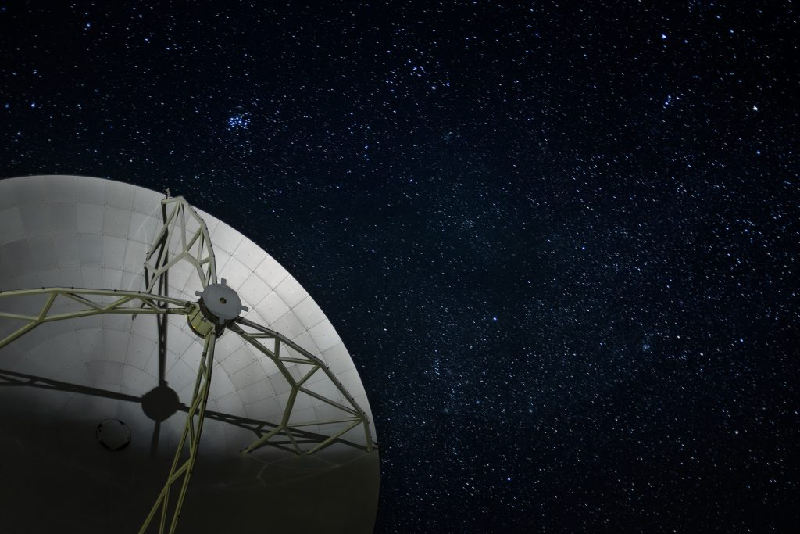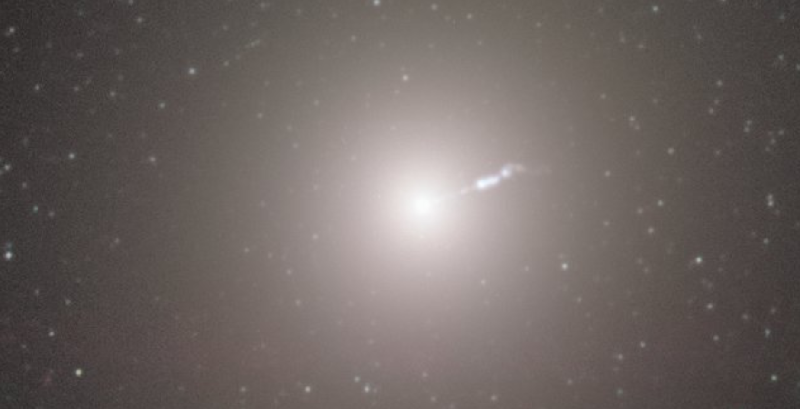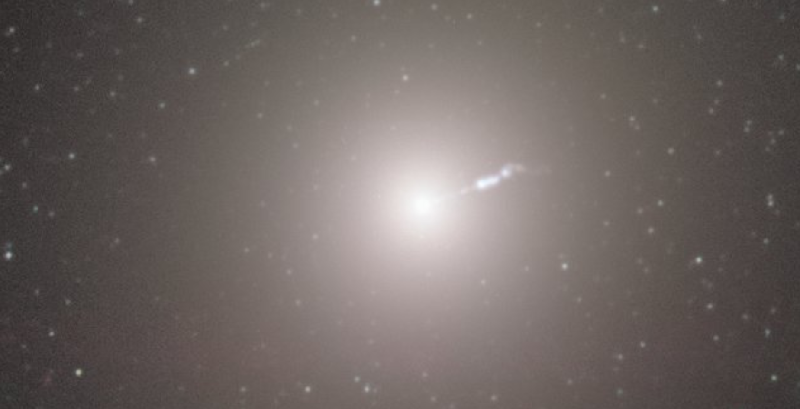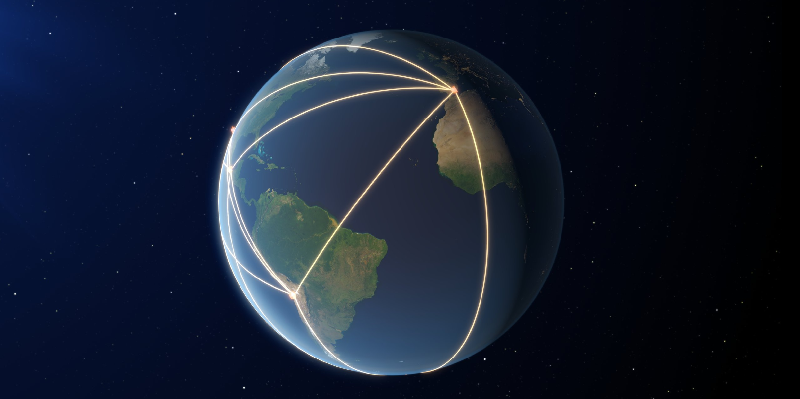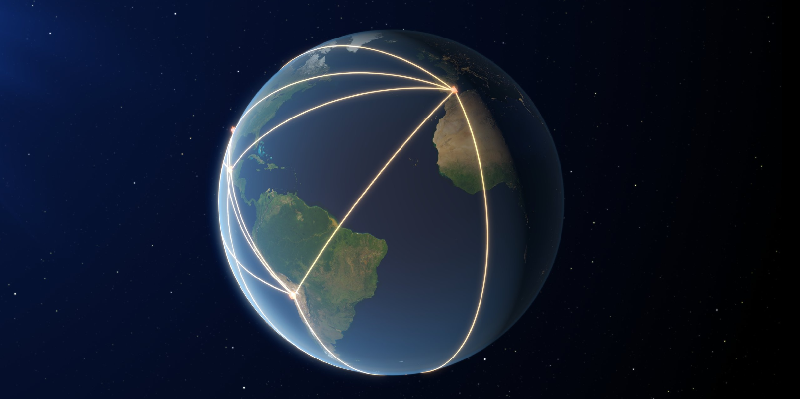Black Hole Imaging Tests Einstein’s Limits
On 10 April 2019, researchers stunned the world with the first-ever picture of a black hole, revealing an object that had once been considered apocryphal [1]. Those same scientists also used the image to carry out an initial test of the general theory of relativity, which predicts the existence and properties of black holes. But to test fundamental physics theories with high precision, researchers plan to create sharper images and even movies within a decade.
“The first image is just the beginning; there is so much more that we can do,” says Lia Medeiros, of the Institute for Advanced Study in New Jersey. She is part of the Event Horizon Telescope (EHT) Collaboration, which produced the black hole image last year. The general theory of relativity is our current theory of gravity, and it perfectly describes the motions of both planets and galaxies. But to date, nearly every test of the theory has been conducted under a weak gravitational field. To truly push the theory to its limits, researchers want to test it in the extreme gravity at the edge of a black hole. Finding these limits could help theorists answer one of the biggest open problems in physics: why general relativity and quantum mechanics produce conflicting predictions. The EHT could also allow tests of some proposed modifications to these theories.
“There are all these exciting theoretical puzzles that make black holes interesting to theorists,” says Alex Lupsasca, a black hole theorist at Harvard University. Gravitational-wave detectors and the EHT have transformed the field so much that it’s “suddenly an experimental science,” he says.
Einstein and Beyond
A black hole’s so-called event horizon is the boundary beyond which nothing can escape, not even light. A light beam passing close to the black hole can be temporarily trapped in orbit just outside the event horizon. According to general relativity, all light beams that arrive from various directions and make a single orbit before heading toward Earth emerge at the same distance from the event horizon and appear to us as a bright “photon ring” (see video). Beams that make two orbits before escaping toward us appear as a sharper but dimmer ring a bit closer to the horizon, and so on for higher numbers of orbits.
Astronomers could potentially image the light from at least three photon rings and then use those images to test Einstein’s predictions, says EHT member Michael Johnson, an astrophysicist at the Harvard-Smithsonian Center for Astrophysics (CfA). For example, general relativity predicts that for a rapidly spinning black hole, the photon rings are not perfect circles but are flattened on one side. “It’s a very subtle effect,” he says, causing perhaps a 1% shape change. The collaboration already tried to test this prediction with the 2019 image, but the resolution was too low to make out any photon rings.
Improving the observations to reveal clean photon rings has other theoretical consequences. The shape prediction arises from general relativity’s “no-hair” theorem, which says that a black hole has only a few specific properties, such as mass, charge, and spin, regardless of how it was created and what went into it. It has none of the complexities, or “hair,” of a star. A consequence of the theorem is that when a black hole gulps down an object, that object’s information vanishes. This prediction from relativity contradicts quantum mechanics, which doesn’t allow information to disappear, leading to the so-called information paradox. So verifying the theorem is important for the ultimate goal of resolving the theories’ conflicts.
Simulations from a team led by Dimitrios Psaltis, a theorist at the University of Arizona and an EHT member, indicate that the photon rings have very different shapes if the no-hair theorem is violated. Their shapes should also change over time. Initial measurements using the doughnut of light in the 2019 image are consistent with a hairless black hole, and an analysis of the gravitational wave data from the first observed black-hole merger also supports the no-hair theorem (see Synopsis: Hunting for Hair on Coalescing Black Holes). But, Psaltis says, sharper images and movies are still needed to provide conclusive proof.
Another ramification of general relativity is that the polarization of light from a spinning black hole’s photon rings should change in a precise way from one ring to the next (see Synopsis: Getting a Black Hole’s Spin from its Photon Ring). Directly detecting that change would allow researchers to measure a black hole’s spin and provide an “insane, super cool” test of Einstein, says Lupsasca. It would also help to prove that the imaged object is indeed a black hole and not something else. “All the evidence suggests that the first image shows a spinning black hole,” says Elizabeth Himwich, a graduate student at Harvard. But, she adds, “precisely measuring that spin would provide a nice confirmation.”
The shape and polarization of the photon rings are also key for testing physics theories other than Einstein’s. One of those is conformal symmetry, a theoretical concept that pops up in classical descriptions of rapidly spinning black holes, in solutions to the information paradox, and in string theory and other quantum theories of gravity. But to find traces of conformal symmetry, the black hole would need to be spinning at close to its maximum possible speed, which is unlikely for M87*—the black hole captured in the first image—according to most experts. But maybe we will get lucky, says Andrew Strominger, a black hole theorist at Harvard. Taking advantage of that luck, however, would require a significant improvement in the EHT’s imaging capabilities.
To See a Grain of Rice on the Moon
Supermassive black holes are extremely distant and compact, so they occupy teensy slivers of the sky. For example, M87* lies 55 million light years away, giving it roughly the diameter of an orange-sized object on the moon, when viewed from Earth.
To get the resolution required for the first black hole image, the EHT Collaboration created a global network of radio dishes that can record data simultaneously. The resulting virtual dish has a diameter very close to Earth’s and a resolution sufficient to capture the fuzzy radio emission around M87*’s dark shadow. But it can’t resolve even one photon ring. For that, the EHT’s resolving power needs to increase by at least 10 times, which will require the addition of a space-based dish. Extending the EHT as far as the moon could possibly allow imaging of the second ring. And if the collaboration adds a dish at L2—a point that lies 1.5 million kilometers from Earth in the direction of the Sun—they should see the third ring. “We’d go from being able to see an orange on the moon to being able to see a grain of rice,” says astrophysicist Shep Doeleman, founding director of the EHT, who works at Harvard University and the CfA.
Doeleman and Johnson say that the team is actively considering adding dishes in space, which would probably involve piggybacking on already-planned missions. In the meantime, the collaboration is looking at upping the EHT’s resolution by adding new radio telescopes on Earth. They hope that these additions will allow close-up imaging of the narrow beam of matter and radiation, called a jet, emanating from M87*—a feature that is visible with other telescopes but not yet with the EHT. New telescopes will also allow the researchers to make black hole movies.
Making Movies: A Black Hole’s Twirling Magnetic Field
Currently it takes a full 24 hours for the EHT to take one image. That timescale works for M87*, whose brightness changes at a glacial pace. But it’s too slow for EHT’s other target, Sagittarius A*, the black hole at the center of the Milky Way. Sagittarius A* evolves on the scale of minutes to hours, so taking an image with the current EHT setup is like trying to photograph a sprinter with the camera shutter open. “You just get a blurry image,” Doeleman says. Doubling the number of Earth-based dishes, or adding one in space, could slash the imaging time, bringing Sag A* into focus. That would allow researchers to perform the same tests on Sag A* that they expect to perform on M87*.
A shorter exposure time would also enable the taking of multiple images over one observational run, images that could then be stitched into a movie showing the dance of a black hole’s magnetic field, for example. Magnetic fields that get twisted around a spinning black hole launch powerful jets, and they hold clues to how black holes eat and grow. Visualizing the magnetic fields would be profoundly influential for understanding how black holes interact with their galaxies, says Jose Gomez, an EHT member from the Andalusia Institute of Astrophysics in Spain.
Movies are still a dream but one Doeleman hopes the collaboration will quickly realize. “I’m making a prediction now that [the EHT] will make movies of black holes by 2029,” he says. “Being able to see something that’s just so complicated and so mysterious evolve in real time with our own eyes would provide a new window to the Universe.”
More Information
–Katherine Wright
Katherine Wright is the Deputy Editor of Physics Magazine.
References
- K. Akiyama et al. (The EHT Collaboration), “First M87 Event Horizon Telescope Results. I. The Shadow of the Supermassive Black Hole,” Astrophys. J. 875, 1 (2019), (the first of six consecutive papers based on the first black hole image).



